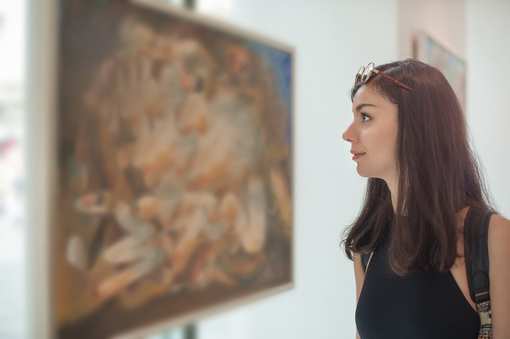History:-
Since 1959, the Naismith Memorial Basketball Hall of Fame has honored and celebrated the game’s greatest moments and brightest stars. On the occasion of its 50th Anniversary, we look back as the greatest shrine to the greatest game fulfills its steadfast promise to be the world’s finest sports museum.
The first manifestation of the Basketball Hall of Fame occupied a small piece of real estate on the campus of Springfield (MA) College, just a midrange jump shot from where the game was first played on December 21, 1891. That day, a physical education instructor named James Naismith introduced a new game to his class of 18 young men in an otherwise unremarkable gymnasium at the YMCA International Training School in Springfield.
The objective of this new game seemed simple enough: throw a round ball into a round basket tacked to a balcony 10 feet above the floor. But the winning team in that first game managed only one basket, on a 25-foot toss by William Chase. The pace of the game was slow and its origins humble, but the new pastime spread quickly, and by 1894, basketball was already being played in France, China, India, and more than a dozen other nations.
The original Basketball Hall of Fame opened its doors to the public on February 17, 1968, during a pivotal time for the sport. Just a month before, on January 20, 1968, Elvin Hayes had just led the University of Houston to a thrilling 71-69 victory over Lew Alcindor and the Bruins of UCLA in college basketball’s version of the Game of the Century. More than 50,000 fans packed the Houston Astrodome that night and millions more watched from home as this epic battle was the first-ever regular season game to be broadcast live on national television.
Only three days after that watershed moment, New York’s Madison Square Garden played host to the 18th annual NBA All-Star Game. The star-studded lineups included future Hall of Famers Oscar Robertson and Jerry Lucas, Elgin Baylor and Jerry West, Wilt Chamberlain and Willis Reed, not to mention Boston’s own triple threat of Bill Russell, John Havlicek, and Sam Jones. For the first time in its history, basketball was front and center in the minds of sports fans across the country.
The grand opening of the Hall in 1968, while timely, was actually the culmination of a game plan that had begun more than thirty years before.
The seeds were planted in 1936 when the United States defeated Canada 19-8 in the gold medal game of the Berlin Olympics. Dr. Naismith, a Canadian himself, attended the game thanks to the generosity and foresight of the National Association of Basketball Coaches, which raised enough money in the months leading up to the Opening Ceremony to send the game's inventor, all expenses paid, to Berlin. Naismith later called this his proudest moment and the sight of his game being played on the international stage stirred his emotions.
Before long the NABC took up an even greater cause – a capital campaign to erect a memorial to the late Dr. Naismith and his wonderful game. America's entry into World War II on December 8, 1941 postponed any thoughts of a Hall of Fame, but in 1949 the NABC renewed its commitment to honor the game and its inventor. Ten years later, in 1959, despite the absence of a physical structure to call home, the Basketball Hall of Fame was incorporated and its first class of inductees was announced.
The Hall of Fame experienced some growing pains during its first two decades on the campus of Springfield College. Each year, several thousand visitors flocked to the birthplace of basketball to be inspired by the stories and memorabilia on display. The Hall had outgrown its original confines.
Aware of the need for the Hall’s expansion, efforts were underway to make the Hall of Fame the world's premier source of basketball information. In 1979, with the cooperation and support of a local organizing committee, the Basketball Hall of Fame sponsored the inaugural Tip-Off Classic, an early season game that signaled the official start of the college basketball season. The Tip-Off Classic pitted the nation's top teams against one another and in its 27 years featured such storied programs as Kentucky, Duke, North Carolina, UCLA, Indiana, and Kansas.
In the early 1980s, the popularity of the game soared to unprecedented heights and the Basketball Hall of Fame was poised to take flight. The rivalry between Larry Bird and Magic Johnson, which first set the nets on fire at the 1979 NCAA Final Four, breathed new life into Dr. Naismith’s game. Bird versus Magic struck a chord with basketball fans everywhere and NBA action was, as its advertising campaign promised, fantastic.
Meanwhile at the University of North Carolina, another kind of bird was about to spread his wings. Flight 23 was cleared for takeoff, tongue wagging from somewhere high above the clouds, hanging in mid-air, and finally returning to earth to change the game forever. His name? Michael Jordan.
As Bird, Magic, Michael and many others pushed the popularity of basketball to a fever pitch in the early 1980s, basketball was about to turn 100 years old and the need for a more appropriate shrine to reflect the game’s growth and development was clear.
On June 30, 1985 more than 10,000 basketball fans descended upon the city of Springfield, including weatherman Willard Scott of NBC’s The Today Show, for the dedication and grand opening of a brand-new Hall of Fame. Three levels of basketball history welcomed visitors that day and new high-tech exhibits gave the museum a futuristic look and feel. The Spalding Shootout, an interactive phenomenon where visitors of all ages shot hoops from a moving platform, proved most popular that first day and remained so every day thereafter. The sprawling new museum, with its fast-paced activity and cutting-edge technology, attracted visitors from every state in the Union and six of the seven continents.
Also in 1985, the Basketball Hall of Fame entered a new era by being the first to recognize the contributions women have made to the game. Senda Berenson Abbott, the First Lady of Basketball, introduced the new game to the women of Smith College in 1892, just a few months after its invention. Bertha Teague coached at Byng High School in Ada, Oklahoma for 42 straight seasons, winning eight state championships. Margaret Wade patrolled the sidelines at Delta State University, and though her time there was short, she captured three consecutive AIAW national championships from 1975 to 1977. The Basketball Hall of Fame was becoming more inclusive, a reflection of the game itself.
The 1985 version of the Basketball Hall of Fame witnessed its share of historic milestones and championship moments. Basketball celebrated its 100th Birthday in grand style on December 21, 1991 by returning to its place of birth for a centennial gala. More than a dozen basketball luminaries helped blow out the candles that day, including the good doctor Julius Erving, the bespectacled George Mikan, the great amateur Bob Kurland, the irrepressible Rick Barry, and the famed coach John McLendon. Duke's Mike Krzyzewski became the first coach since John Wooden to win back-to-back NCAA national championships in 1992, the same year the United States Dream Team captured gold at the summer Olympics. In 1997 the WNBA, a women’s professional league, exploded onto the American sports scene.
Once again, the tremendous growth and popularity of the game forced a second relocation and in 2000 construction began on the third Hall of Fame.
In September of 2002, on the occasion of the new building’s spectacular grand opening celebration, the Hall welcomed Coaches Larry Brown, Lute Olson, and Kay Yow and, players Drazen Petrovic and Magic Johnson as the first Inductees to take their rightful place in the new Honors Ring. The Honors Ring overlooks Center Court, an iconic, breathtaking, full-size regulation basketball court where the game never ends. On any given day, visitors lace ’em up to play under the basketball heavens, reliving the glory days of yesteryear or practicing for the big games yet to come.
Today, the Naismith Memorial Basketball Hall of Fame is home to nearly three hundred inductees and more than 40,000 square feet of basketball history. Located on the picturesque banks of the Connecticut River, the new museum is a fitting shrine to the game Dr. Naismith invented more than a century ago. The landmark structure is one of the world’s most distinctive monuments punctuating the Springfield skyline and stirring the spirits of basketball fans everywhere. Hundreds of interactive exhibits share the spotlight with skills challenges, live clinics, and shooting contests. And of course there is enough basketball history to impress the world’s most avid sports fans!
After decades of growth, the Naismith Memorial Basketball Hall of Fame celebrated its 50th Anniversary in 2009. It has evolved from its humble origins to become Hoops Heaven...the earthly home of the game’s immortals.






